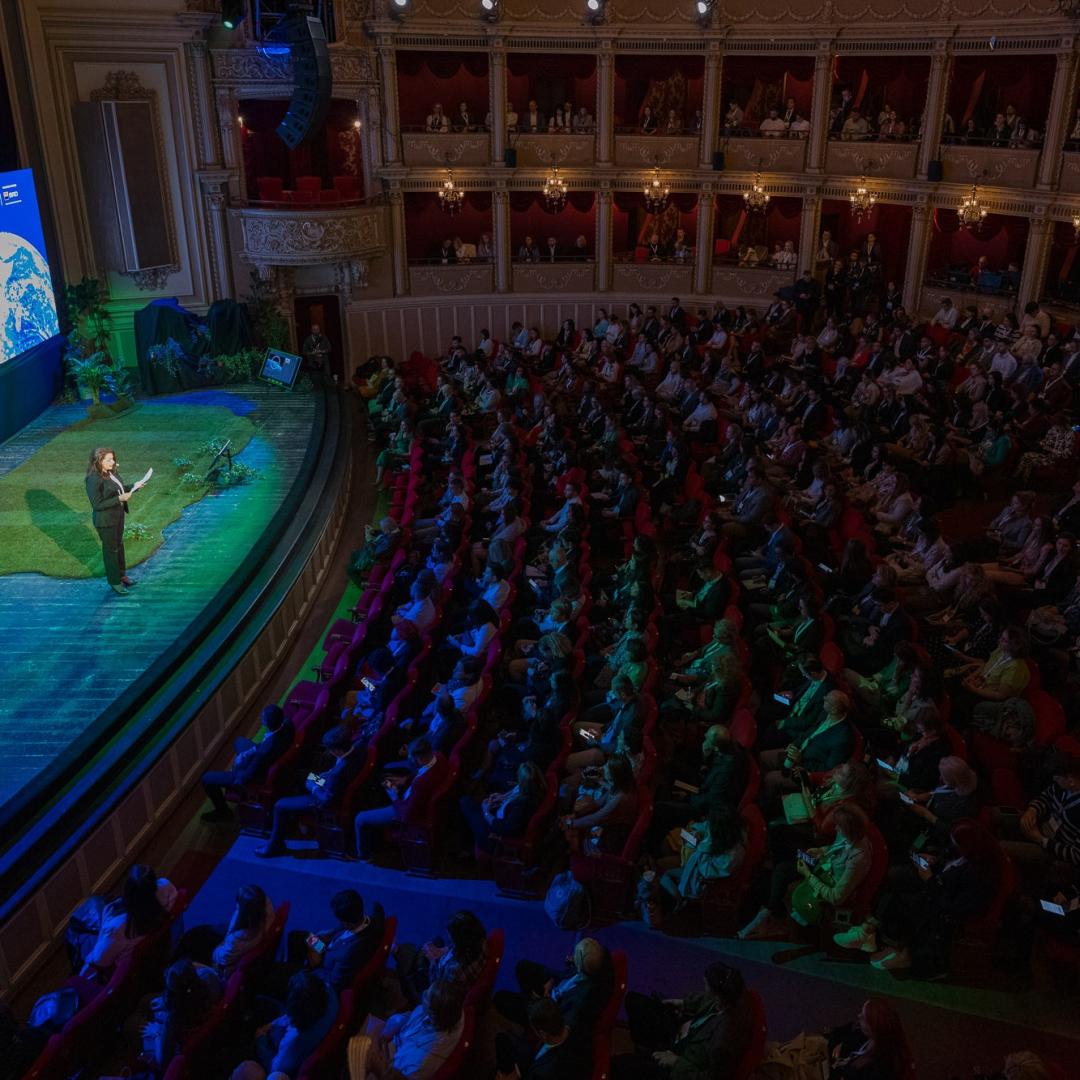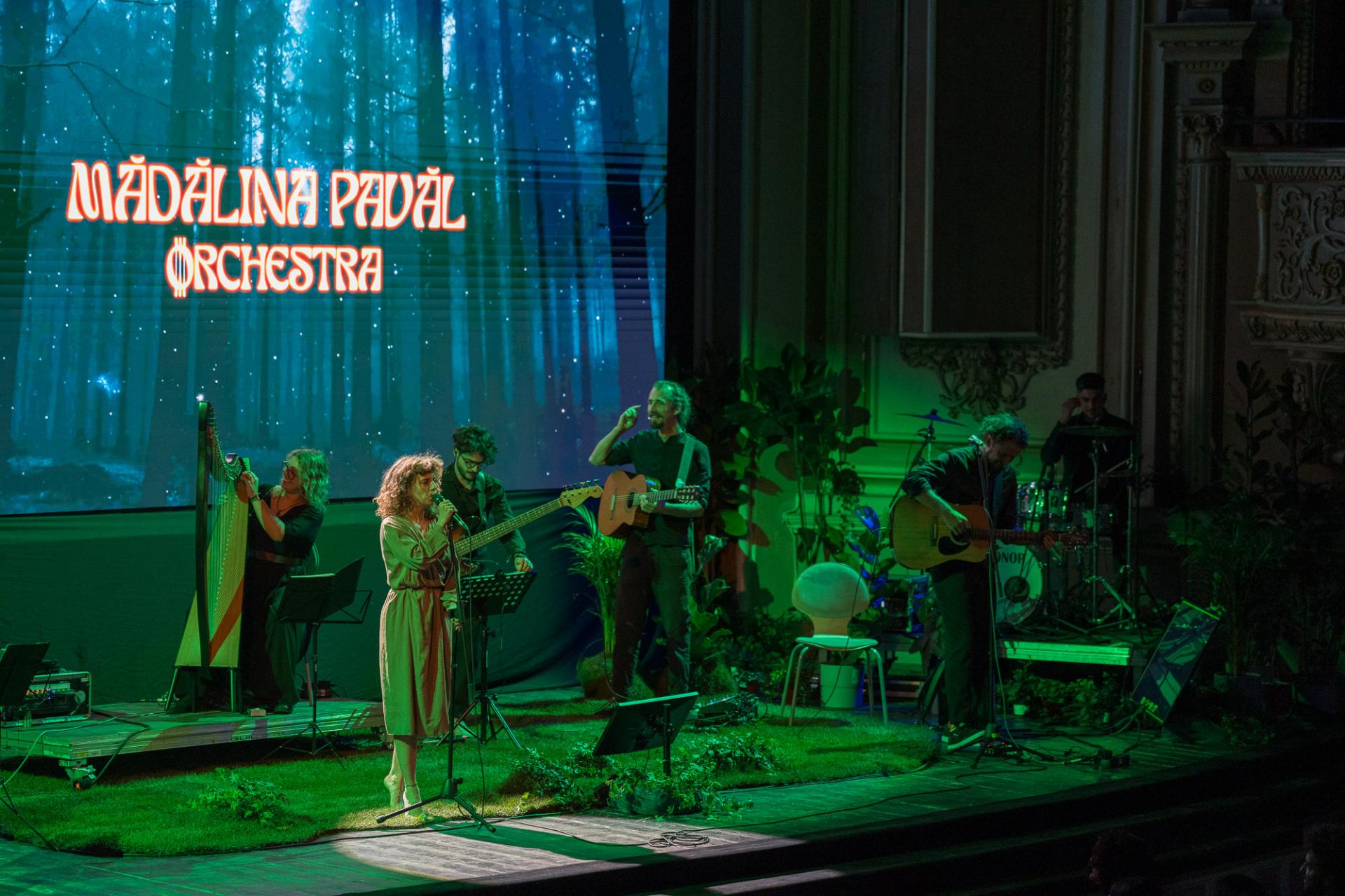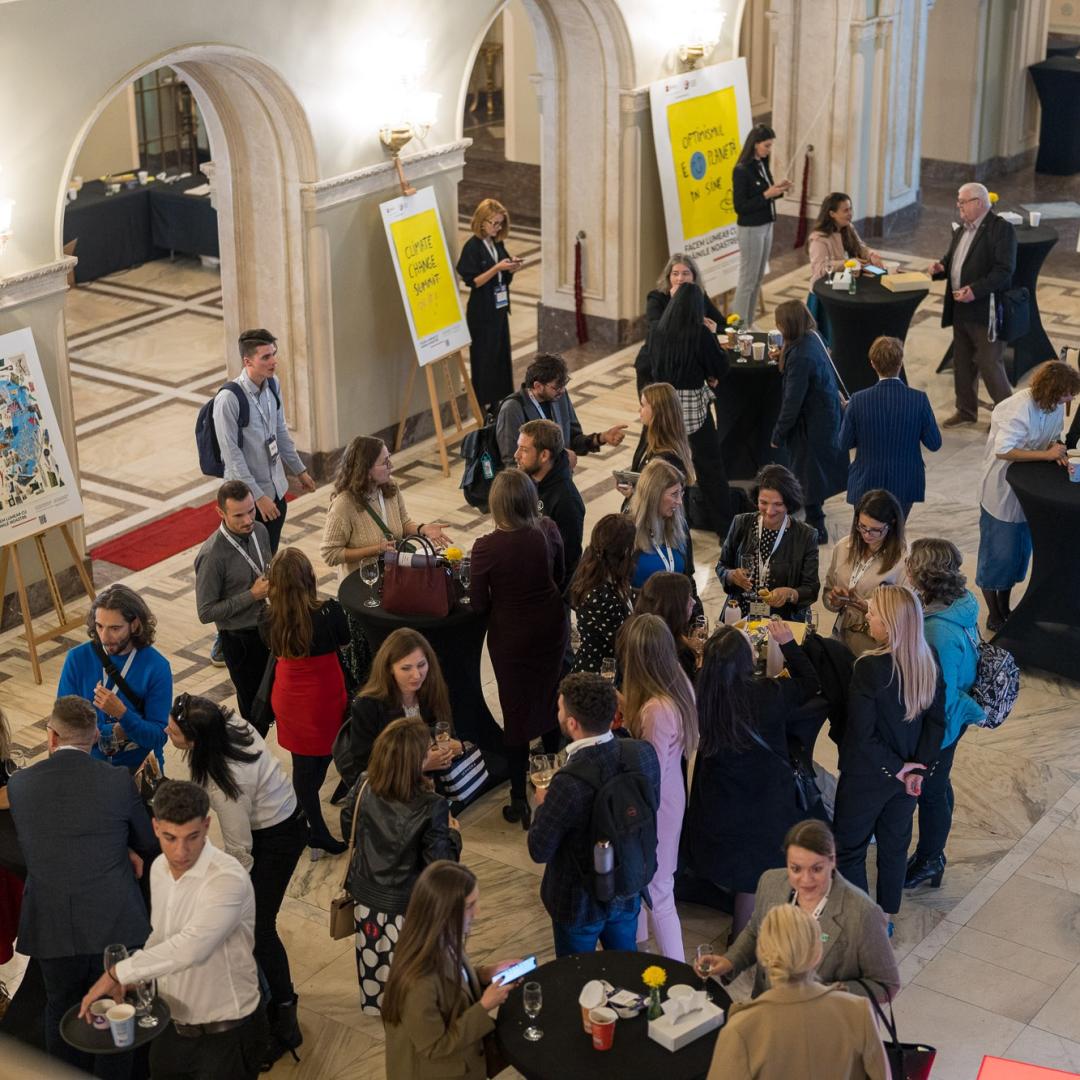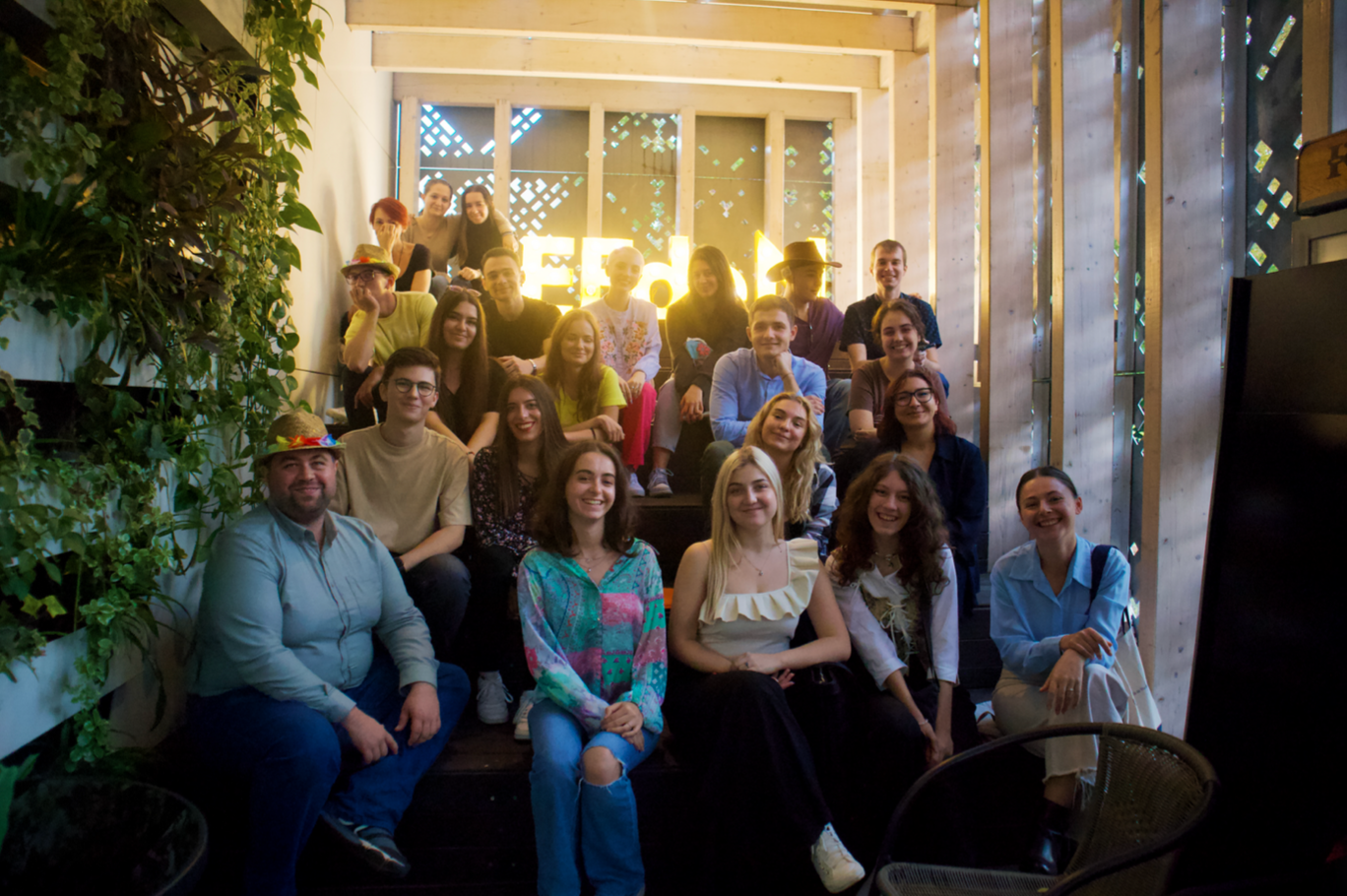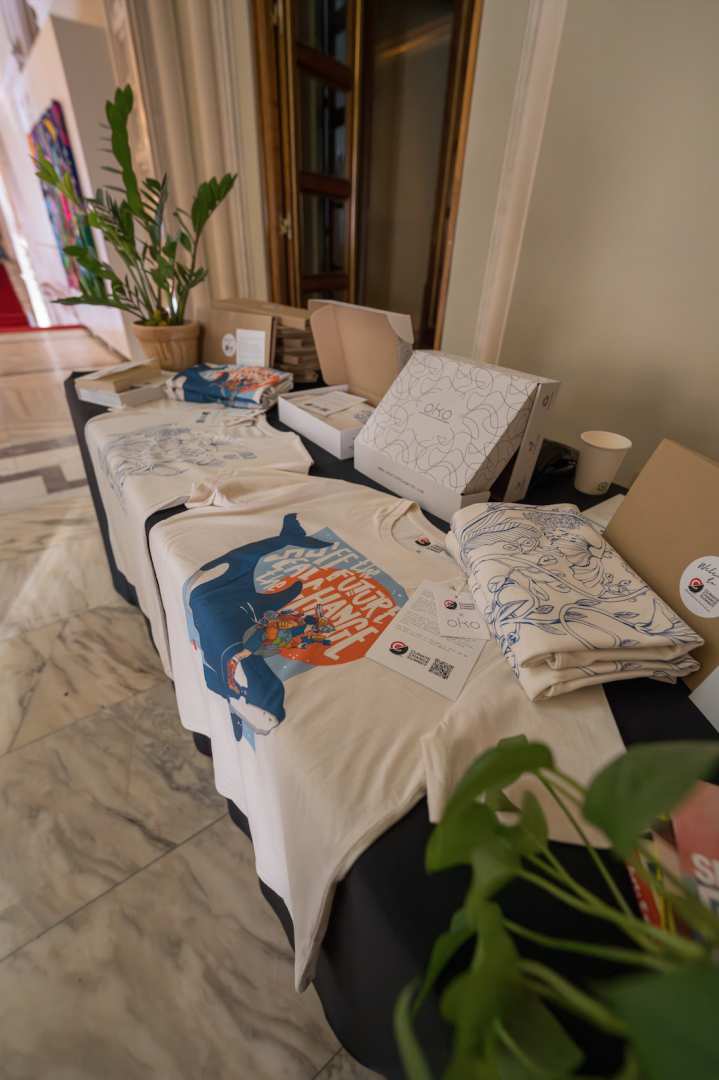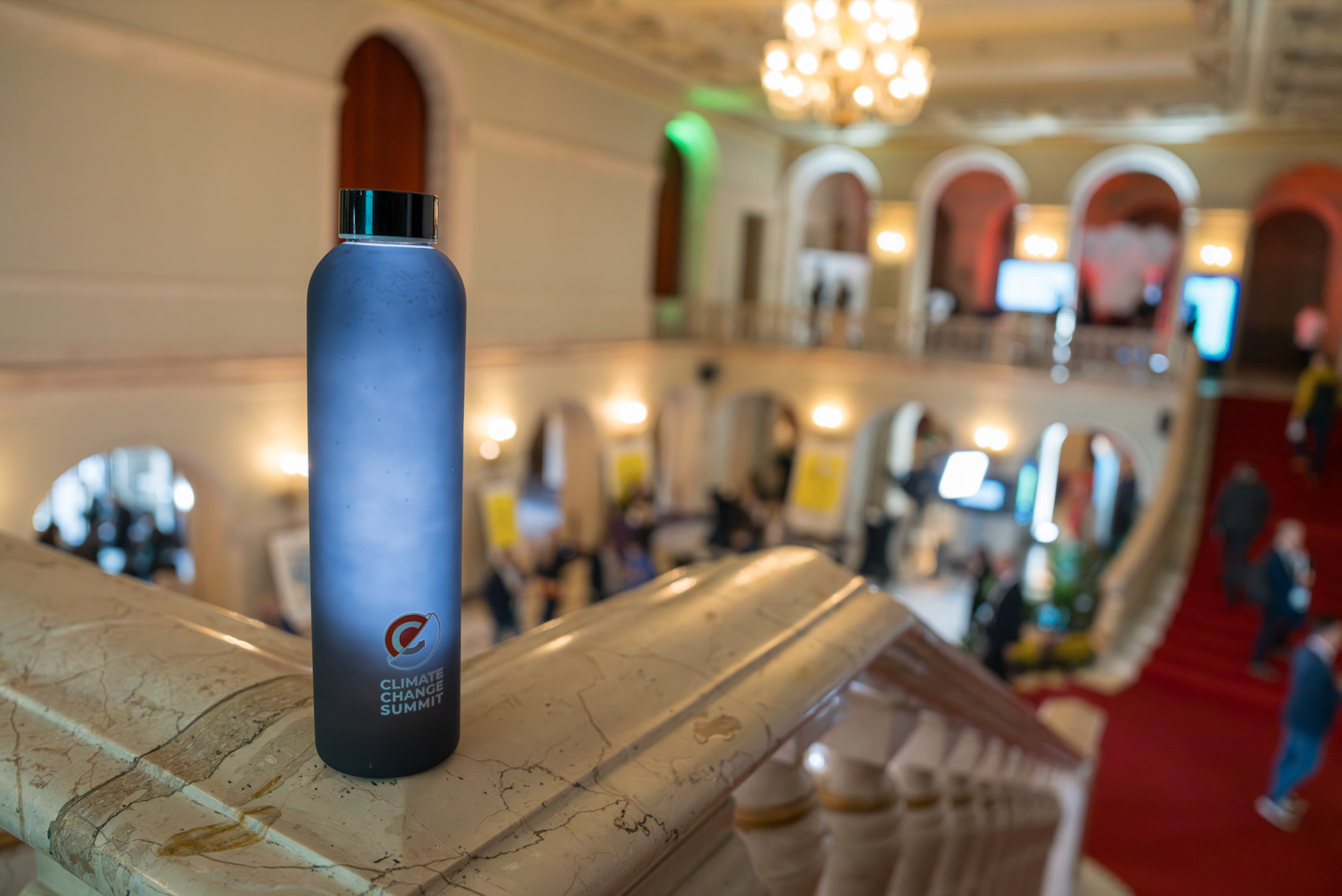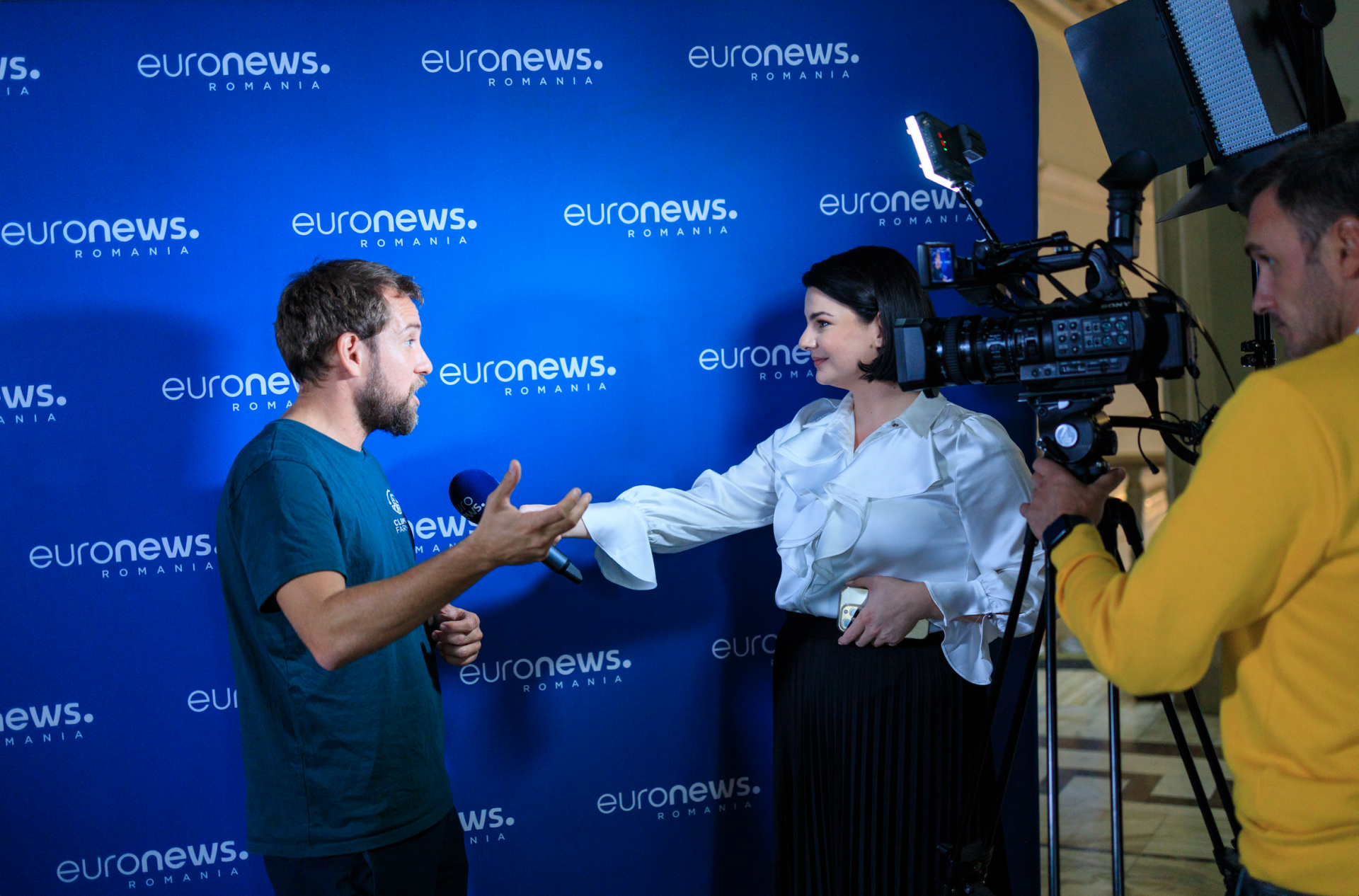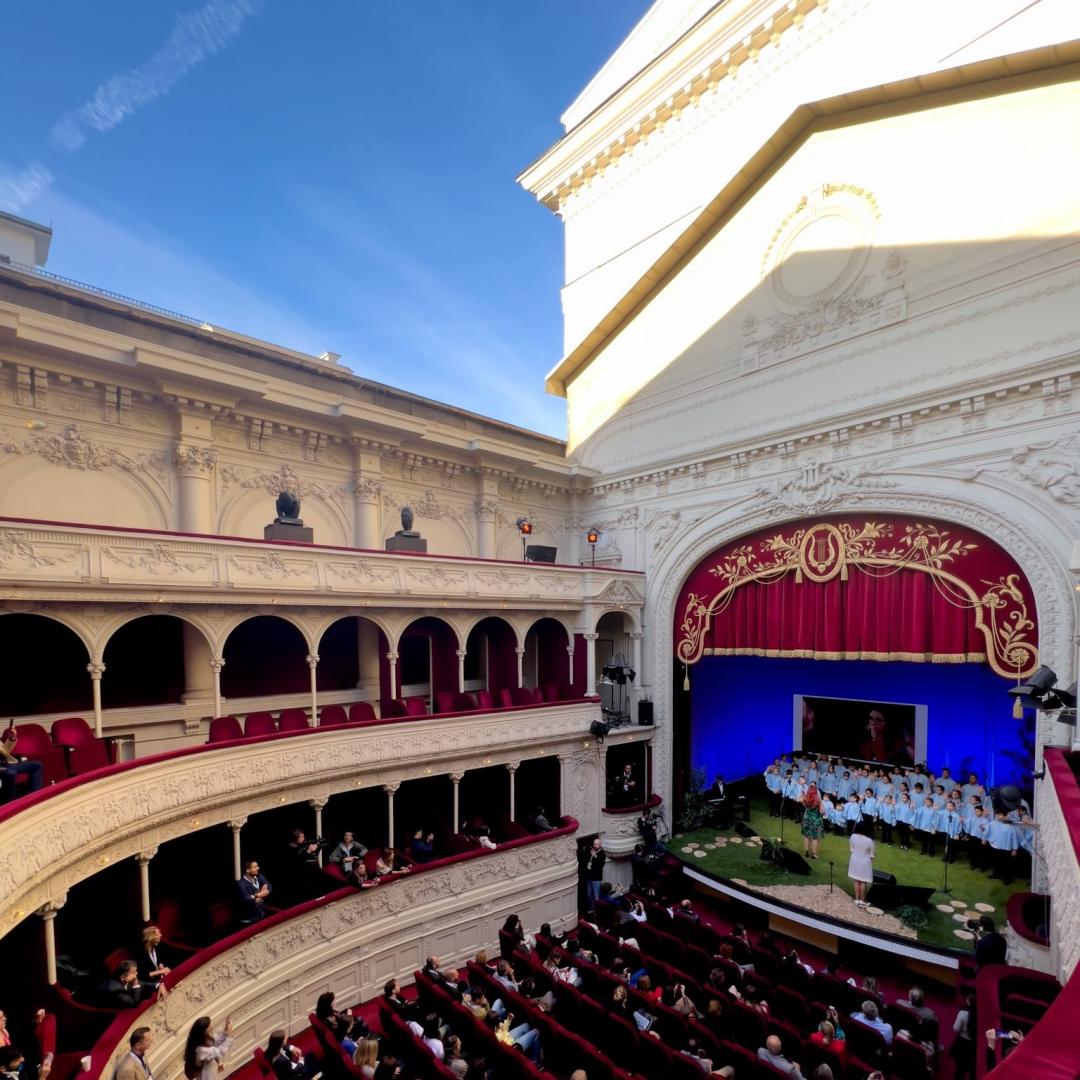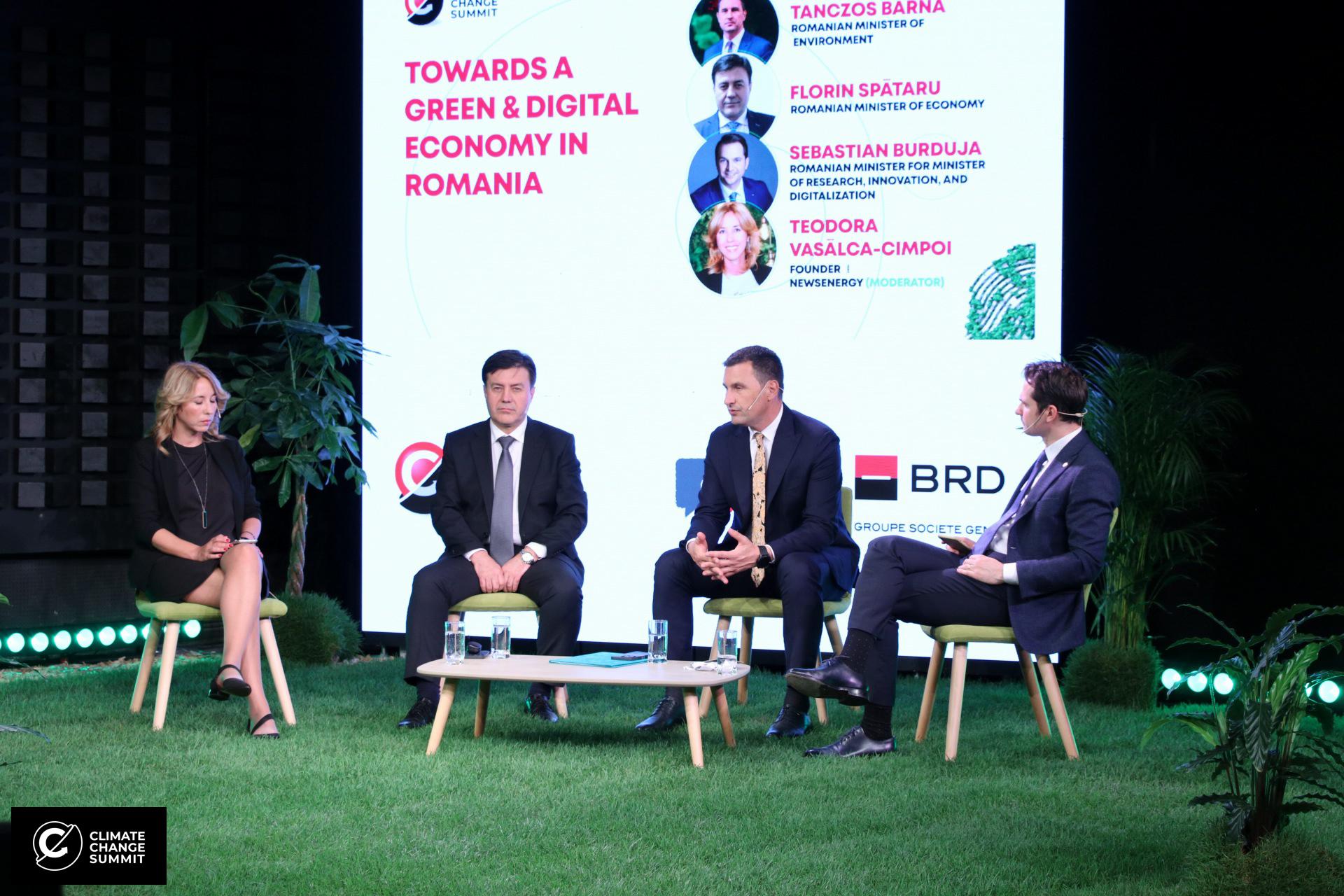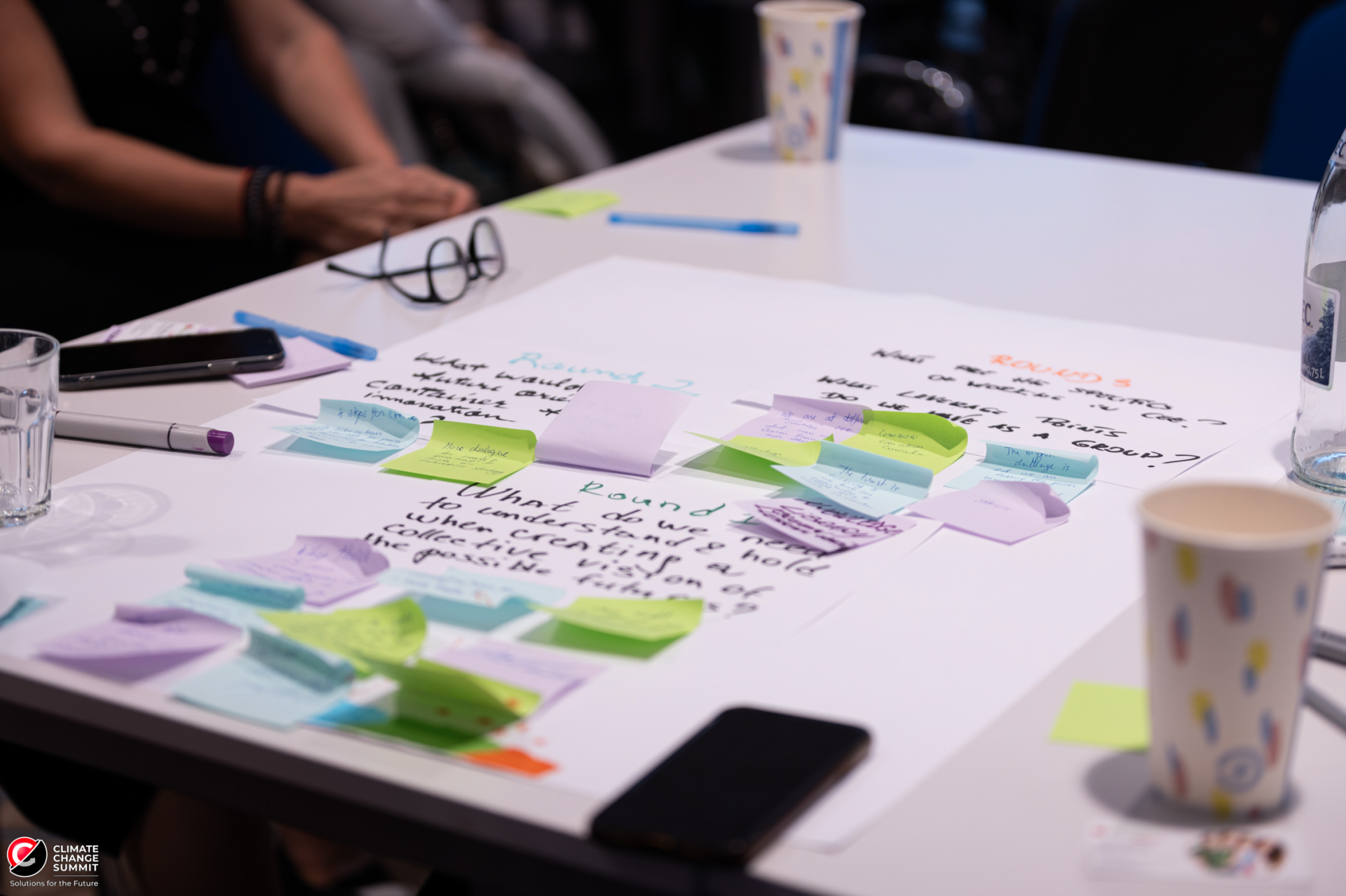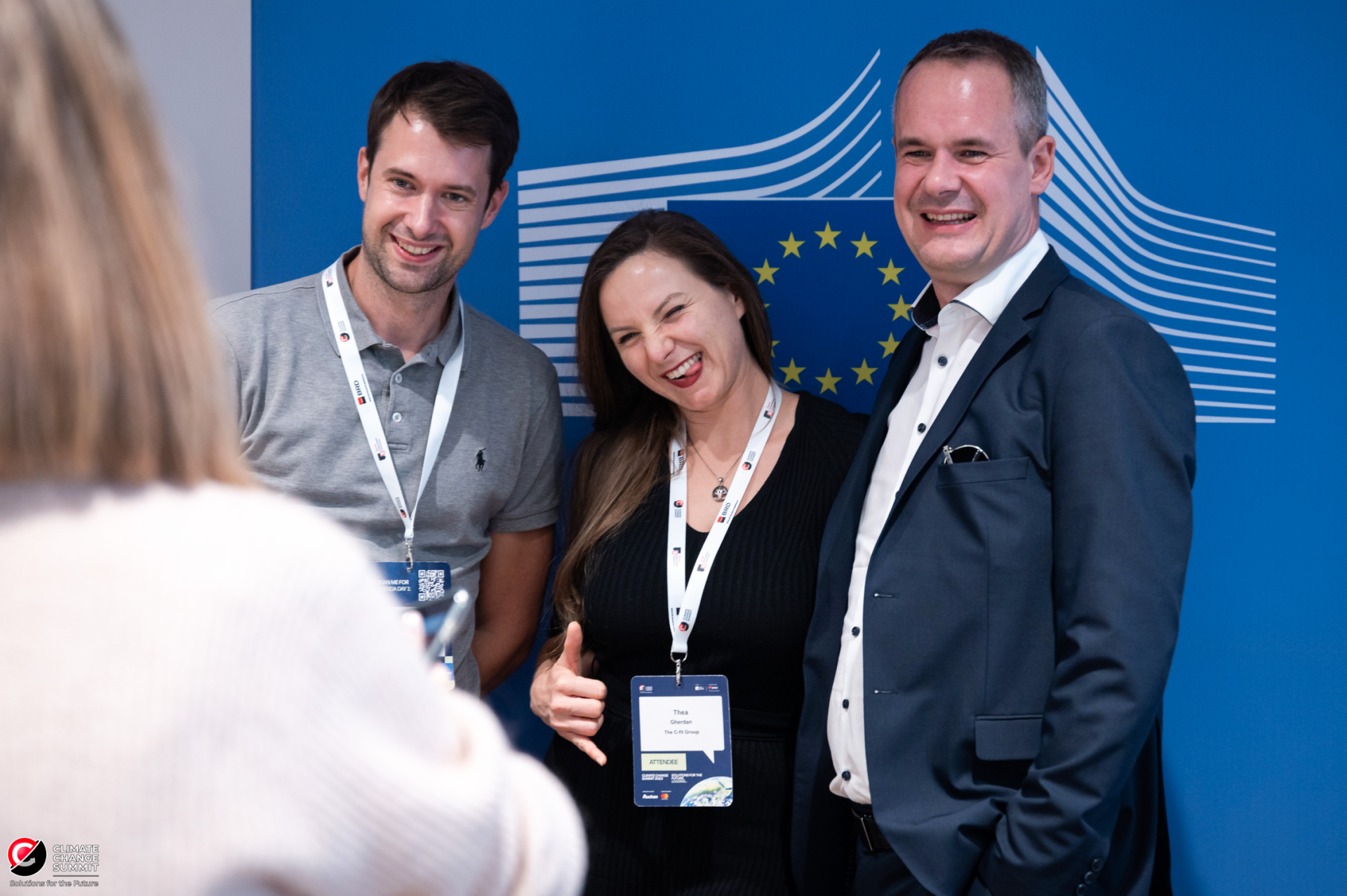Climate Change Summit.
Basic information
Project Title
Climate Change Summit.
Full project title
Climate Change Summit
Category
Reconnecting with nature
Project Description
Climate Change Summit: Where sustainability, inclusion, and beauty converge. This pioneering event showcases nature-based solutions, promotes biodiversity, and fosters community participation in eco-friendly transformation. Embracing diversity and accessibility, we connect people and nature in meaningful ways. Through innovative, replicable models, the Summit sets a new standard in environmental action, encouraging global change through local engagement.
Geographical Scope
National
Project Region
Romania
Urban or rural issues
It addresses urban-rural linkages
Physical or other transformations
It refers to other types of transformations (soft investment)
EU Programme or fund
No
Description of the project
Summary
Climate Change Summit (CCS) is the largest conversation platform in CEE on sustainability and climate action.
Over its two editions (2022 and 2023), the Summit has garnered over 1.6 million online viewers from around the world, 2400 offline participants from the region, 150 international speakers, 1200 media articles, 150 partners, in 30 events organised within different communities. The Summit is organised in collaboration with the Chancellery of the Prime-Minister of Romania, the General Secretariat of the Government of Romania, and the Representation of the European Commission in Romania, along with the most notable business and civic organisations in the region.
Climate Change Summit aims to redefine the human relationship with nature through sustainable practices, fostering a global community of environmental stewardship and inclusive growth. Our primary audience includes environmental activists, policy-makers, students, local communities, and industry leaders. The Summit focuses on engaging diverse stakeholders, including vulnerable and underrepresented groups, ensuring broad and inclusive participation.
Our objectives:
Promote Nature-Based Solutions: Create a platform for innovative, sustainable practices that enhance biodiversity and ecosystem health.
Foster Inclusivity in Environmental Action: Ensure that environmental initiatives are accessible to all, highlighting diverse perspectives in the pursuit of ecological balance.
Integrate Aesthetics with Sustainability: Blend cultural and artistic elements into discussions and presentations, making environmental action not just practical but also emotionally and culturally resonant.
The Summit has reached all of its objectives - as we will further demonstrate, we have created a platform that promotes collaboration and partnerships, making sure that no one is left behind. We blended art with climate in multiple occasions and we raised awareness in communities, ensuring long term impact.
Over its two editions (2022 and 2023), the Summit has garnered over 1.6 million online viewers from around the world, 2400 offline participants from the region, 150 international speakers, 1200 media articles, 150 partners, in 30 events organised within different communities. The Summit is organised in collaboration with the Chancellery of the Prime-Minister of Romania, the General Secretariat of the Government of Romania, and the Representation of the European Commission in Romania, along with the most notable business and civic organisations in the region.
Climate Change Summit aims to redefine the human relationship with nature through sustainable practices, fostering a global community of environmental stewardship and inclusive growth. Our primary audience includes environmental activists, policy-makers, students, local communities, and industry leaders. The Summit focuses on engaging diverse stakeholders, including vulnerable and underrepresented groups, ensuring broad and inclusive participation.
Our objectives:
Promote Nature-Based Solutions: Create a platform for innovative, sustainable practices that enhance biodiversity and ecosystem health.
Foster Inclusivity in Environmental Action: Ensure that environmental initiatives are accessible to all, highlighting diverse perspectives in the pursuit of ecological balance.
Integrate Aesthetics with Sustainability: Blend cultural and artistic elements into discussions and presentations, making environmental action not just practical but also emotionally and culturally resonant.
The Summit has reached all of its objectives - as we will further demonstrate, we have created a platform that promotes collaboration and partnerships, making sure that no one is left behind. We blended art with climate in multiple occasions and we raised awareness in communities, ensuring long term impact.
Key objectives for sustainability
Minimizing Environmental Footprint: The Summit has committed to significantly minimizing its environmental impact. As a result, the average CO2 emissions per participant in 2022 was about 10 times smaller than the international average. We have offset the remaining emissions by investing in a recycling facility. Some of the measures we took to minimise our footprint include: new materials were not printed, any necessary print-outs were made on FSC-certified paper; the materials used for stage decor were rented or repurposed by other partners post-event; website hosting on green servers; sustainable hotel and dining options; no single-use plastic used in the event etc.
Publication of a Sustainability Report: As a leading example, we published a comprehensive sustainability report – a pioneering action in the event industry. The report details our strategies and accomplishments in reducing environmental impact and supporting sustainability.
Inspiring Systemic Change: We aim to set a benchmark for sustainable event management, hoping to inspire our participants, partners, and the wider community to adopt similar practices, contributing to a broader systemic shift towards sustainability.
Replicability potential:
Our robust commitment to minimizing our environmental footprint and investing in emission reduction projects sets us apart as an exemplar in sustainable event management.
The publication of a detailed sustainability report highlights our transparency and commitment to environmental accountability.
By aligning with and actively promoting various SDGs, we demonstrate a holistic and multi-faceted approach to sustainability, going beyond mere compliance to active advocacy and education.
Our commitment is not just to host an event but to stimulate an ongoing dialogue and action on climate change, emphasizing our role as a catalyst in the global sustainability movement.
Publication of a Sustainability Report: As a leading example, we published a comprehensive sustainability report – a pioneering action in the event industry. The report details our strategies and accomplishments in reducing environmental impact and supporting sustainability.
Inspiring Systemic Change: We aim to set a benchmark for sustainable event management, hoping to inspire our participants, partners, and the wider community to adopt similar practices, contributing to a broader systemic shift towards sustainability.
Replicability potential:
Our robust commitment to minimizing our environmental footprint and investing in emission reduction projects sets us apart as an exemplar in sustainable event management.
The publication of a detailed sustainability report highlights our transparency and commitment to environmental accountability.
By aligning with and actively promoting various SDGs, we demonstrate a holistic and multi-faceted approach to sustainability, going beyond mere compliance to active advocacy and education.
Our commitment is not just to host an event but to stimulate an ongoing dialogue and action on climate change, emphasizing our role as a catalyst in the global sustainability movement.
Key objectives for aesthetics and quality
One of our primary goals is to personalize climate awareness through art. By integrating visual arts, music, and interactive installations, we aim to evoke an emotional connection to the environment and a deeper understanding of climate change’s impacts.
Our Summit transcends traditional conferences, offering immersive experiences through interactive exhibits, performances, and installations that not only inform but also inspire and captivate attendees. We incorporate local culture and heritage, celebrating diversity and relating the global climate challenge to local contexts, making it more relatable and actionable. The Summit builds a community through shared artistic and cultural experiences, bridging diverse groups and fostering collaboration on climate challenges.
Featuring artists and designers using sustainable practices, we highlight how sustainability can be infused into creative disciplines, inspiring eco-friendly practices. Our aesthetic elements aim to provoke reflective and transformative dialogue, leveraging art and culture to challenge perspectives and stimulate innovative climate discussions.
Highlights include Ukrainian artist Normski's "Painting the Future" mural in Bucharest, a sustainability emblem encouraging reflection on climate change, and the "Lumea9" exhibition, showcasing local artists' sustainable techniques, underlining the urgency of a sustainable future. Mădălina Pavăl Orchestra’s performance at the 2023 Summit adds a deep, cultural touch, while our eco-conscious t-shirt collaboration, featuring QR-coded animations, showcases innovative climate advocacy.
Our approach sets a standard in environmental art advocacy, merging culture, aesthetics, and technology to enrich experiences and shape a transformative view of sustainability.
Our Summit transcends traditional conferences, offering immersive experiences through interactive exhibits, performances, and installations that not only inform but also inspire and captivate attendees. We incorporate local culture and heritage, celebrating diversity and relating the global climate challenge to local contexts, making it more relatable and actionable. The Summit builds a community through shared artistic and cultural experiences, bridging diverse groups and fostering collaboration on climate challenges.
Featuring artists and designers using sustainable practices, we highlight how sustainability can be infused into creative disciplines, inspiring eco-friendly practices. Our aesthetic elements aim to provoke reflective and transformative dialogue, leveraging art and culture to challenge perspectives and stimulate innovative climate discussions.
Highlights include Ukrainian artist Normski's "Painting the Future" mural in Bucharest, a sustainability emblem encouraging reflection on climate change, and the "Lumea9" exhibition, showcasing local artists' sustainable techniques, underlining the urgency of a sustainable future. Mădălina Pavăl Orchestra’s performance at the 2023 Summit adds a deep, cultural touch, while our eco-conscious t-shirt collaboration, featuring QR-coded animations, showcases innovative climate advocacy.
Our approach sets a standard in environmental art advocacy, merging culture, aesthetics, and technology to enrich experiences and shape a transformative view of sustainability.
Key objectives for inclusion
Universal Accessibility and Affordability: A central objective of the Climate Change Summit was to ensure accessibility and affordability for all. We achieved this by offering all our events free of charge, removing financial barriers and making the Summit inclusive and open to everyone interested in climate change and sustainability.
Expansive Reach Across Diverse Venues: We organized events in 20 different locations, including five universities, various civic organizations, and youth groups. This strategy was designed to bring the conversation to a wide audience, reaching individuals from various social, economic, and educational backgrounds.
Diverse Representation and Voices: We aimed to include a diverse range of voices in our panels and discussions, representing different perspectives, ages, genders, cultural backgrounds, and areas of expertise. This approach fostered a more holistic and inclusive dialogue around climate action.
Engagement with Local and Global Communities: By involving both local and global communities, we ensured that the Summit addressed issues relevant to diverse populations. This approach allowed for a rich exchange of ideas and practices from different parts of the world.
Exemplary Aspects in Inclusion:
Offering free events made the Summit exemplary in terms of economic inclusivity, setting a standard for accessible environmental education and discussion.
The choice of diverse locations, including educational institutions and community centers, highlighted our commitment to bringing the climate conversation to where people are, rather than expecting them to come to us.
The Summit's diverse panel representation showcases our dedication to incorporating a wide range of perspectives, ensuring that the dialogue around climate change is varied and inclusive.
By engaging with a mix of local and international participants, we demonstrated how global issues can be addressed through inclusive, multi-faceted community involvement.
Expansive Reach Across Diverse Venues: We organized events in 20 different locations, including five universities, various civic organizations, and youth groups. This strategy was designed to bring the conversation to a wide audience, reaching individuals from various social, economic, and educational backgrounds.
Diverse Representation and Voices: We aimed to include a diverse range of voices in our panels and discussions, representing different perspectives, ages, genders, cultural backgrounds, and areas of expertise. This approach fostered a more holistic and inclusive dialogue around climate action.
Engagement with Local and Global Communities: By involving both local and global communities, we ensured that the Summit addressed issues relevant to diverse populations. This approach allowed for a rich exchange of ideas and practices from different parts of the world.
Exemplary Aspects in Inclusion:
Offering free events made the Summit exemplary in terms of economic inclusivity, setting a standard for accessible environmental education and discussion.
The choice of diverse locations, including educational institutions and community centers, highlighted our commitment to bringing the climate conversation to where people are, rather than expecting them to come to us.
The Summit's diverse panel representation showcases our dedication to incorporating a wide range of perspectives, ensuring that the dialogue around climate change is varied and inclusive.
By engaging with a mix of local and international participants, we demonstrated how global issues can be addressed through inclusive, multi-faceted community involvement.
Results in relation to category
Networking and Professional Collaboration:
73.3% New Connections: The Summit was a hub for networking, significantly enhancing collaboration among professionals in sustainability and climate action.
Influence on Sustainable Choices:
86.7% Inspired for Sustainable Living: The majority of attendees were motivated to adopt sustainable daily practices, like reducing waste and using public transportation.
Increased Environmental Awareness:
90.3% Heightened Awareness: Attendees experienced a notable increase in environmental awareness, a marked improvement over other events.
High Return Intent:
94.8% Plan to Return: Reflecting the Summit's effectiveness, an overwhelming majority of participants intend to join next year's edition.
Additional Key Impacts:
Global and Regional Reach: Across its 2022 and 2023 editions, the Summit attracted over 1.6 million online viewers globally, 2,400 regional attendees, 150 international speakers, and was featured in 1,200 media articles. It also collaborated with 150 partners to host 30 events within diverse communities.
Policy Influence: The Summit's elements, such as the Green Belt for Bucharest Memorandum, significantly impacted both local and national environmental policies.
Community Engagement: With a focus on local involvement, the Summit empowered communities, enhancing their understanding and capacity to engage in sustainability.
Innovation and Technology: Showcasing start-ups and new technologies, the Summit presented novel solutions to environmental challenges.
Circular Economy Emphasis: The event played a crucial role in promoting the circular economy, influencing attendees from various industries to integrate circular elements in their business models.
Educational Ripple Effect: The Summit's discussions and content extended beyond the event, impacting educational institutions and fostering a broader understanding of sustainability.
73.3% New Connections: The Summit was a hub for networking, significantly enhancing collaboration among professionals in sustainability and climate action.
Influence on Sustainable Choices:
86.7% Inspired for Sustainable Living: The majority of attendees were motivated to adopt sustainable daily practices, like reducing waste and using public transportation.
Increased Environmental Awareness:
90.3% Heightened Awareness: Attendees experienced a notable increase in environmental awareness, a marked improvement over other events.
High Return Intent:
94.8% Plan to Return: Reflecting the Summit's effectiveness, an overwhelming majority of participants intend to join next year's edition.
Additional Key Impacts:
Global and Regional Reach: Across its 2022 and 2023 editions, the Summit attracted over 1.6 million online viewers globally, 2,400 regional attendees, 150 international speakers, and was featured in 1,200 media articles. It also collaborated with 150 partners to host 30 events within diverse communities.
Policy Influence: The Summit's elements, such as the Green Belt for Bucharest Memorandum, significantly impacted both local and national environmental policies.
Community Engagement: With a focus on local involvement, the Summit empowered communities, enhancing their understanding and capacity to engage in sustainability.
Innovation and Technology: Showcasing start-ups and new technologies, the Summit presented novel solutions to environmental challenges.
Circular Economy Emphasis: The event played a crucial role in promoting the circular economy, influencing attendees from various industries to integrate circular elements in their business models.
Educational Ripple Effect: The Summit's discussions and content extended beyond the event, impacting educational institutions and fostering a broader understanding of sustainability.
How Citizens benefit
Climate Change Summit deeply involved citizens and civil society organizations in its planning, execution, and active participation, ensuring diverse perspectives shaped the event.
Consultative Planning: Local community leaders, environmental groups, and NGOs were consulted during the planning phase. Their insights were crucial in shaping the agenda and speaker selection, ensuring the event was reflective of varied needs.
Active Participation: Members of the civil society contributed as panelists and speakers, bringing grassroots perspectives. Their real-world experiences enriched discussions, grounding them in practical realities.
University Collaboration: The inclusion of universities facilitated a knowledge exchange between the academic community and other participants. This collaboration enhanced the event's educational value, especially for students.
Youth and Civic Organization Roles: Youth and civic groups were key in organizing and leading events. Their involvement ensured the Summit resonated with younger audiences and added innovative ideas to the discussions.
Volunteer Engagement: Local volunteers were instrumental in logistics and attendee management, facilitating smooth event operations and interactions.
Impact of Involvement:
Diverse Perspectives: The involvement of a broad range of participants enriched content and discussions, making them more relevant and multifaceted.
Expanded Reach: The active role of local communities broadened the Summit's reach and engagement, creating a more dynamic and inclusive event.
Community Connections: Collaborations fostered stronger community ties and ongoing partnerships, extending the Summit's impact beyond the event.
Valuable Feedback: Continuous input from these diverse groups has been crucial for improving future events, ensuring they remain inclusive and impactful.
This involvement was integral to the Summit's success, ensuring that it truly empowered those who are typically under-represented.
Consultative Planning: Local community leaders, environmental groups, and NGOs were consulted during the planning phase. Their insights were crucial in shaping the agenda and speaker selection, ensuring the event was reflective of varied needs.
Active Participation: Members of the civil society contributed as panelists and speakers, bringing grassroots perspectives. Their real-world experiences enriched discussions, grounding them in practical realities.
University Collaboration: The inclusion of universities facilitated a knowledge exchange between the academic community and other participants. This collaboration enhanced the event's educational value, especially for students.
Youth and Civic Organization Roles: Youth and civic groups were key in organizing and leading events. Their involvement ensured the Summit resonated with younger audiences and added innovative ideas to the discussions.
Volunteer Engagement: Local volunteers were instrumental in logistics and attendee management, facilitating smooth event operations and interactions.
Impact of Involvement:
Diverse Perspectives: The involvement of a broad range of participants enriched content and discussions, making them more relevant and multifaceted.
Expanded Reach: The active role of local communities broadened the Summit's reach and engagement, creating a more dynamic and inclusive event.
Community Connections: Collaborations fostered stronger community ties and ongoing partnerships, extending the Summit's impact beyond the event.
Valuable Feedback: Continuous input from these diverse groups has been crucial for improving future events, ensuring they remain inclusive and impactful.
This involvement was integral to the Summit's success, ensuring that it truly empowered those who are typically under-represented.
Physical or other transformations
It refers to other types of transformations (soft investment)
Innovative character
Interdisciplinary Integration: The Summit stood out by integrating various fields like technology, finance, and urban planning with environmental science, offering a holistic approach to climate issues, and making climate action relevant to a wider audience, breaking new ground in stakeholder involvement.
Intersectionality Focus: Emphasizing intersectionality, the Summit brought a fresh perspective on how interconnected social, economic, and environmental issues are, expanding the scope of climate discourse.
Local and Global Perspectives: By blending local initiatives with global climate policies, the Summit provided actionable insights, bridging the gap between community-focused and global strategies.
Community-Centric Approach: Unlike top-down focused events, the Summit emphasized grassroots initiatives and local actor empowerment, signaling a shift towards more participatory environmental governance.
Art and Technology Integration: Employing culture and technology in innovative ways, the Summit used interactive installations and sustainable art to engage participants and communicate complex climate issues creatively.
Intersectionality Focus: Emphasizing intersectionality, the Summit brought a fresh perspective on how interconnected social, economic, and environmental issues are, expanding the scope of climate discourse.
Local and Global Perspectives: By blending local initiatives with global climate policies, the Summit provided actionable insights, bridging the gap between community-focused and global strategies.
Community-Centric Approach: Unlike top-down focused events, the Summit emphasized grassroots initiatives and local actor empowerment, signaling a shift towards more participatory environmental governance.
Art and Technology Integration: Employing culture and technology in innovative ways, the Summit used interactive installations and sustainable art to engage participants and communicate complex climate issues creatively.
Disciplines/knowledge reflected
The Summit integrated diverse fields reflecting intersectionality and balanced industry participation, with a focus on making climate action relevant across sectors:
Energy: Renewable and sustainable energy solutions.
Food & Agriculture: Sustainable farming and food security.
Cities & Mobility: Urban sustainability and eco-friendly transport.
Biodiversity: Ecosystem preservation.
Policy: Environmental policy-making.
Finance: Green financing and sustainable investments.
Circular Economy: Waste reduction and sustainable business models.
Startup Solutions: Innovations in sustainability.
Technology: Tech advancements in environmental protection.
By ensuring balanced participation from various industries, the Summit broke the mold of a niche eco-event. Instead, it became a platform where every industry could understand its role in climate action. This approach facilitated:
Cross-Disciplinary Learning: Participants gained insights into how different sectors impact and are impacted by climate change. For example, discussions on urban sustainability provided insights for those in mobility and infrastructure sectors.
Collaborative Problem-Solving: The diverse gathering of professionals encouraged thinking outside the box, leading to innovative solutions that may not have emerged in more homogenous settings.
Broadening Perspectives: The Summit helped shift the perception of climate action from a specialized concern to a universal responsibility, vital across all sectors of society and industry.
This intersectional and inclusive approach ensured that the Summit wasn’t just an environmental conference but a comprehensive platform for climate action, relevant and accessible to all industries and sectors. The added value was a richer, more inclusive dialogue on climate action, creating a blueprint for future events to follow.
Energy: Renewable and sustainable energy solutions.
Food & Agriculture: Sustainable farming and food security.
Cities & Mobility: Urban sustainability and eco-friendly transport.
Biodiversity: Ecosystem preservation.
Policy: Environmental policy-making.
Finance: Green financing and sustainable investments.
Circular Economy: Waste reduction and sustainable business models.
Startup Solutions: Innovations in sustainability.
Technology: Tech advancements in environmental protection.
By ensuring balanced participation from various industries, the Summit broke the mold of a niche eco-event. Instead, it became a platform where every industry could understand its role in climate action. This approach facilitated:
Cross-Disciplinary Learning: Participants gained insights into how different sectors impact and are impacted by climate change. For example, discussions on urban sustainability provided insights for those in mobility and infrastructure sectors.
Collaborative Problem-Solving: The diverse gathering of professionals encouraged thinking outside the box, leading to innovative solutions that may not have emerged in more homogenous settings.
Broadening Perspectives: The Summit helped shift the perception of climate action from a specialized concern to a universal responsibility, vital across all sectors of society and industry.
This intersectional and inclusive approach ensured that the Summit wasn’t just an environmental conference but a comprehensive platform for climate action, relevant and accessible to all industries and sectors. The added value was a richer, more inclusive dialogue on climate action, creating a blueprint for future events to follow.
Methodology used
Climate Change Summit employed a multifaceted methodology to address the complex challenge of climate change:
Interdisciplinary Panels and Workshops: The Summit featured a range of panels and workshops that brought together experts from diverse fields such as environmental science, technology, finance, and policy. This approach ensured that discussions and solutions were multifaceted, addressing the issue from various angles.
Incorporation of Art and Culture: Recognizing the power of art to communicate and inspire, the Summit integrated artistic elements like murals, exhibitions, and performances. These elements made climate issues more accessible and emotionally resonant.
Community Engagement and Inclusivity: The methodology centered around engaging a broad spectrum of the community. This included collaborating with local organizations, involving community leaders in discussions, and ensuring that events were accessible to a wide audience.
Use of Technology for Engagement: The Summit leveraged digital tools and platforms for wider reach and engagement. This included using social media for awareness and interaction, and integrating technology in exhibits for interactive experiences.
Sustainable Event Management: Sustainability was a core aspect of the Summit’s methodology. This included minimizing the environmental impact of the event through sustainable practices in venue selection, material use, waste management, and encouraging eco-friendly transportation.
Focus on Actionable Outcomes: The Summit aimed to produce actionable outcomes, such as collaborative projects, policy recommendations, and community initiatives. This was facilitated through focused discussions, networking sessions, and dedicated workshops for developing practical solutions.
Interdisciplinary Panels and Workshops: The Summit featured a range of panels and workshops that brought together experts from diverse fields such as environmental science, technology, finance, and policy. This approach ensured that discussions and solutions were multifaceted, addressing the issue from various angles.
Incorporation of Art and Culture: Recognizing the power of art to communicate and inspire, the Summit integrated artistic elements like murals, exhibitions, and performances. These elements made climate issues more accessible and emotionally resonant.
Community Engagement and Inclusivity: The methodology centered around engaging a broad spectrum of the community. This included collaborating with local organizations, involving community leaders in discussions, and ensuring that events were accessible to a wide audience.
Use of Technology for Engagement: The Summit leveraged digital tools and platforms for wider reach and engagement. This included using social media for awareness and interaction, and integrating technology in exhibits for interactive experiences.
Sustainable Event Management: Sustainability was a core aspect of the Summit’s methodology. This included minimizing the environmental impact of the event through sustainable practices in venue selection, material use, waste management, and encouraging eco-friendly transportation.
Focus on Actionable Outcomes: The Summit aimed to produce actionable outcomes, such as collaborative projects, policy recommendations, and community initiatives. This was facilitated through focused discussions, networking sessions, and dedicated workshops for developing practical solutions.
How stakeholders are engaged
Local Level:
Mayoral Participation: Four Romanian city mayors joined panels, sharing insights on local climate initiatives.
Bucharest-Ilfov Green Belt Project: At the Summit, a memorandum was signed by the mayor of Bucharest, and the President of the County Council, focusing on a public health project to address pollution and biodiversity crises.
Added Value: Direct involvement of local leaders brought city-level climate actions to the forefront, demonstrating practical urban environmental strategies.
National Level:
Parliamentary Roundtable: Focused on Romania's climate law, involving MPs in a discussion about national climate strategies.
Government Roundtable: State Advisors discussed international climate commitments and policies for climate mitigation and adaptation, aligning national actions with global goals.
Ministry of Environment Events: Secretaries of State discussed policy impact assessment and green infrastructure investment, bridging policy and implementation.
Added Value: National-level discussions linked the Summit’s themes with Romania's policy landscape, influencing legislation and providing a national climate perspective.
European Level:
CEE Climate Meeting: Hosted by the European Commission Representation in Romania and facilitated by EIT Climate KIC, this workshop aimed to foster better cross-border collaboration in climate action within CEE.
Added Value: Promoted regional cooperation and shared strategies for climate challenges, enhancing collective action.
Overall Impact:
The multi-level stakeholder engagement, from local to European, ensured comprehensive coverage of climate issues. Local leaders' involvement showcased actionable urban solutions, while national-level discussions aligned with legislative processes, enriching the Summit’s content. The European-focused workshop highlighted the necessity of collaborative regional approaches in addressing climate change.
Mayoral Participation: Four Romanian city mayors joined panels, sharing insights on local climate initiatives.
Bucharest-Ilfov Green Belt Project: At the Summit, a memorandum was signed by the mayor of Bucharest, and the President of the County Council, focusing on a public health project to address pollution and biodiversity crises.
Added Value: Direct involvement of local leaders brought city-level climate actions to the forefront, demonstrating practical urban environmental strategies.
National Level:
Parliamentary Roundtable: Focused on Romania's climate law, involving MPs in a discussion about national climate strategies.
Government Roundtable: State Advisors discussed international climate commitments and policies for climate mitigation and adaptation, aligning national actions with global goals.
Ministry of Environment Events: Secretaries of State discussed policy impact assessment and green infrastructure investment, bridging policy and implementation.
Added Value: National-level discussions linked the Summit’s themes with Romania's policy landscape, influencing legislation and providing a national climate perspective.
European Level:
CEE Climate Meeting: Hosted by the European Commission Representation in Romania and facilitated by EIT Climate KIC, this workshop aimed to foster better cross-border collaboration in climate action within CEE.
Added Value: Promoted regional cooperation and shared strategies for climate challenges, enhancing collective action.
Overall Impact:
The multi-level stakeholder engagement, from local to European, ensured comprehensive coverage of climate issues. Local leaders' involvement showcased actionable urban solutions, while national-level discussions aligned with legislative processes, enriching the Summit’s content. The European-focused workshop highlighted the necessity of collaborative regional approaches in addressing climate change.
Global challenges
Climate Change Mitigation and Adaptation: By focusing on sustainable practices in energy, agriculture, and urban planning, the Summit provides actionable strategies that local communities can implement. These practices contribute to global efforts to reduce greenhouse gas emissions and adapt to climate change impacts.
Biodiversity Loss: Through discussions and initiatives centered on biodiversity, the Summit offers local solutions like habitat conservation and sustainable land use. These actions, while local in scale, collectively contribute to global efforts to halt biodiversity loss.
Sustainable Urban Development: With a focus on cities and mobility, the Summit presents solutions for sustainable urban living, which is crucial as urbanization continues globally. Ideas like green infrastructure and eco-friendly transportation systems developed at a local level can be models for cities worldwide.
Environmental Education and Awareness: By integrating art and culture into climate discussions, the Summit fosters environmental awareness in a way that resonates locally. This approach addresses the global need for greater public understanding and engagement in environmental issues.
Circular Economy and Waste Reduction: The Summit’s emphasis on circular economy principles provides local models for reducing waste and promoting sustainable consumption, which are key to addressing the global waste crisis.
Policy Development and Implementation: The Summit’s policy discussions encourage the development and implementation of local environmental policies, which can influence and inspire broader national and international policy frameworks.
Community Empowerment and Inclusivity: The Summit’s inclusive approach empowers local communities, addressing the global challenge of ensuring that climate action is equitable and leaves no one behind.
Biodiversity Loss: Through discussions and initiatives centered on biodiversity, the Summit offers local solutions like habitat conservation and sustainable land use. These actions, while local in scale, collectively contribute to global efforts to halt biodiversity loss.
Sustainable Urban Development: With a focus on cities and mobility, the Summit presents solutions for sustainable urban living, which is crucial as urbanization continues globally. Ideas like green infrastructure and eco-friendly transportation systems developed at a local level can be models for cities worldwide.
Environmental Education and Awareness: By integrating art and culture into climate discussions, the Summit fosters environmental awareness in a way that resonates locally. This approach addresses the global need for greater public understanding and engagement in environmental issues.
Circular Economy and Waste Reduction: The Summit’s emphasis on circular economy principles provides local models for reducing waste and promoting sustainable consumption, which are key to addressing the global waste crisis.
Policy Development and Implementation: The Summit’s policy discussions encourage the development and implementation of local environmental policies, which can influence and inspire broader national and international policy frameworks.
Community Empowerment and Inclusivity: The Summit’s inclusive approach empowers local communities, addressing the global challenge of ensuring that climate action is equitable and leaves no one behind.
Learning transferred to other parties
We are actively planning to expand Climate Change Summit to multiple countries in Central and Eastern Europe (CEE). Following our principle of inclusion, we aim to proactively reach out to people instead of waiting for them to come to us; although multiple professionals from CEE have joined our events in Bucharest, we want to go where they are, to achieve larger impact. The innovative approach to climate action, developed in collaboration with our partners at CCS, has great potential for replication in regions particularly vulnerable to misinformation and fake news, such as CEE.
Elements for Replication:
Art and Culture for Climate Messaging: Utilizing art to convey climate issues can be tailored to reflect the unique cultural narratives of each CEE country, making complex topics more relatable and engaging.
Digital Engagement Tools: Leveraging technology for outreach and interactive experiences can be effectively implemented across CEE to enhance awareness and participation.
Sustainable Event Framework: The eco-friendly practices of CCS, including venue selection and waste management, can serve as a model for environmentally responsible event planning in other regions.
Education and Counteracting Misinformation: The Summit’s educational content, particularly in addressing climate misinformation, is vital for CEE. This approach can help build a well-informed public discourse on climate issues.
Elements for Replication:
Art and Culture for Climate Messaging: Utilizing art to convey climate issues can be tailored to reflect the unique cultural narratives of each CEE country, making complex topics more relatable and engaging.
Digital Engagement Tools: Leveraging technology for outreach and interactive experiences can be effectively implemented across CEE to enhance awareness and participation.
Sustainable Event Framework: The eco-friendly practices of CCS, including venue selection and waste management, can serve as a model for environmentally responsible event planning in other regions.
Education and Counteracting Misinformation: The Summit’s educational content, particularly in addressing climate misinformation, is vital for CEE. This approach can help build a well-informed public discourse on climate issues.
Keywords
Sustainability
Biodiversity
Inclusivity
Nature-based Solutions
Community Engagement

